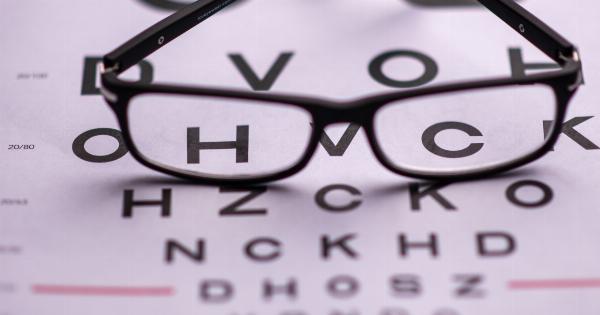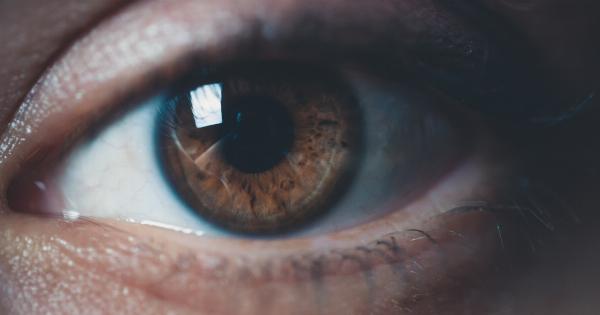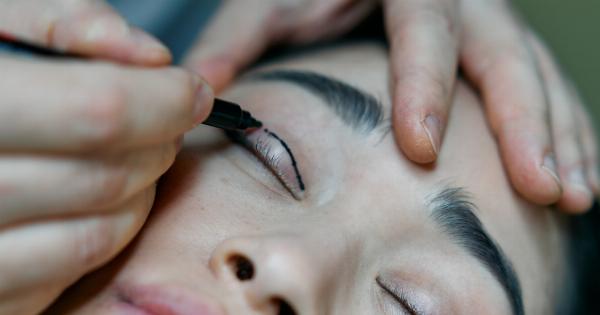Dry eye syndrome, also known as dry eye disease, is a common condition that occurs when your tears are not able to provide adequate lubrication for your eyes. It can lead to discomfort, irritation, and even vision problems.
If you suspect you may have dry eyes, there is a quick and easy test you can do at home to help determine if you have this condition.
What is Dry Eye?
Dry eye occurs when your eyes do not produce enough tears or when the tears evaporate too quickly. Tears are essential for maintaining the health of your eyes, keeping them lubricated, and protecting them from infections.
When the tear film is disrupted, various symptoms can occur.
The Symptoms of Dry Eye
Dry eye can cause a range of symptoms, including:.
- Stinging or burning sensation in the eyes
- Redness
- Blurred vision
- Sensitivity to light
- Eye fatigue
- Watery eyes (paradoxical tearing)
- Difficulty wearing contact lenses
- A sensation of having something in your eye
The Quick Test: Schirmer’s Test
Schirmer’s test is a simple and quick test that can help determine if you have dry eye syndrome. To perform the test, follow these steps:.
- Wash your hands thoroughly with soap and water.
- Take a strip of Schirmer’s test paper and fold it at the marked line.
- Tilt your head back slightly and place the folded end of the strip into the outer corner of your eye.
- Close your eyes and keep them closed for 5 minutes while the strip absorbs your tears.
- After 5 minutes, remove the strip and measure the wet portion in millimeters.
Interpreting the Results
If the wet portion of the strip measures less than 10 millimeters, it is likely that you have dry eyes. However, it is important to note that this test alone is not sufficient to diagnose dry eye.
It is recommended to consult with an eye care professional for a comprehensive evaluation.
Causes of Dry Eye
There are several factors that can contribute to the development of dry eye:.
- Age: Dry eye is more common in individuals above the age of 50.
- Hormonal changes: Dry eye is more prevalent in women due to hormones fluctuations, particularly during pregnancy and menopause.
- Environmental factors: Dry and windy climates, air conditioning, and exposure to smoke can contribute to dry eye.
- Computer and screen use: Prolonged screen time can reduce blinking, leading to dryness.
- Medical conditions: Certain medical conditions like rheumatoid arthritis, diabetes, thyroid dysfunction, and Sjögren’s syndrome can cause dry eye.
Treatment Options for Dry Eye
Several treatment options are available to alleviate the symptoms of dry eye:.
- Artificial tears: Over-the-counter lubricating eye drops can provide temporary relief.
- Prescription eye drops: In severe cases, your eye care professional may prescribe medicated eye drops to reduce inflammation and promote tear production.
- Eye inserts: Small inserts placed inside the lower eyelid can continuously lubricate the eyes.
- Punctal plugs: Tiny plugs inserted into the tear ducts block tear drainage, keeping the eyes moist.
- Lifestyle changes: Practices like taking regular breaks during screen time, using a humidifier, and avoiding smoke can help alleviate dry eye symptoms.
Preventing Dry Eye
While not all cases of dry eye can be prevented, there are some lifestyle changes that can reduce the risk of developing this condition:.
- Blink regularly, especially during prolonged screen use.
- Take breaks and rest your eyes when doing visually demanding tasks.
- Ensure proper humidity levels in your home and workplace.
- Wear protective eyewear in dry or windy environments.
- Follow a healthy diet rich in omega-3 fatty acids, which may help improve tear production.
Conclusion
If you experience persistent symptoms of dry eye, it is essential to seek professional advice.
While the Schirmer’s test can give you a preliminary indication, an eye care professional will be able to provide a comprehensive evaluation and recommend appropriate treatment options.























